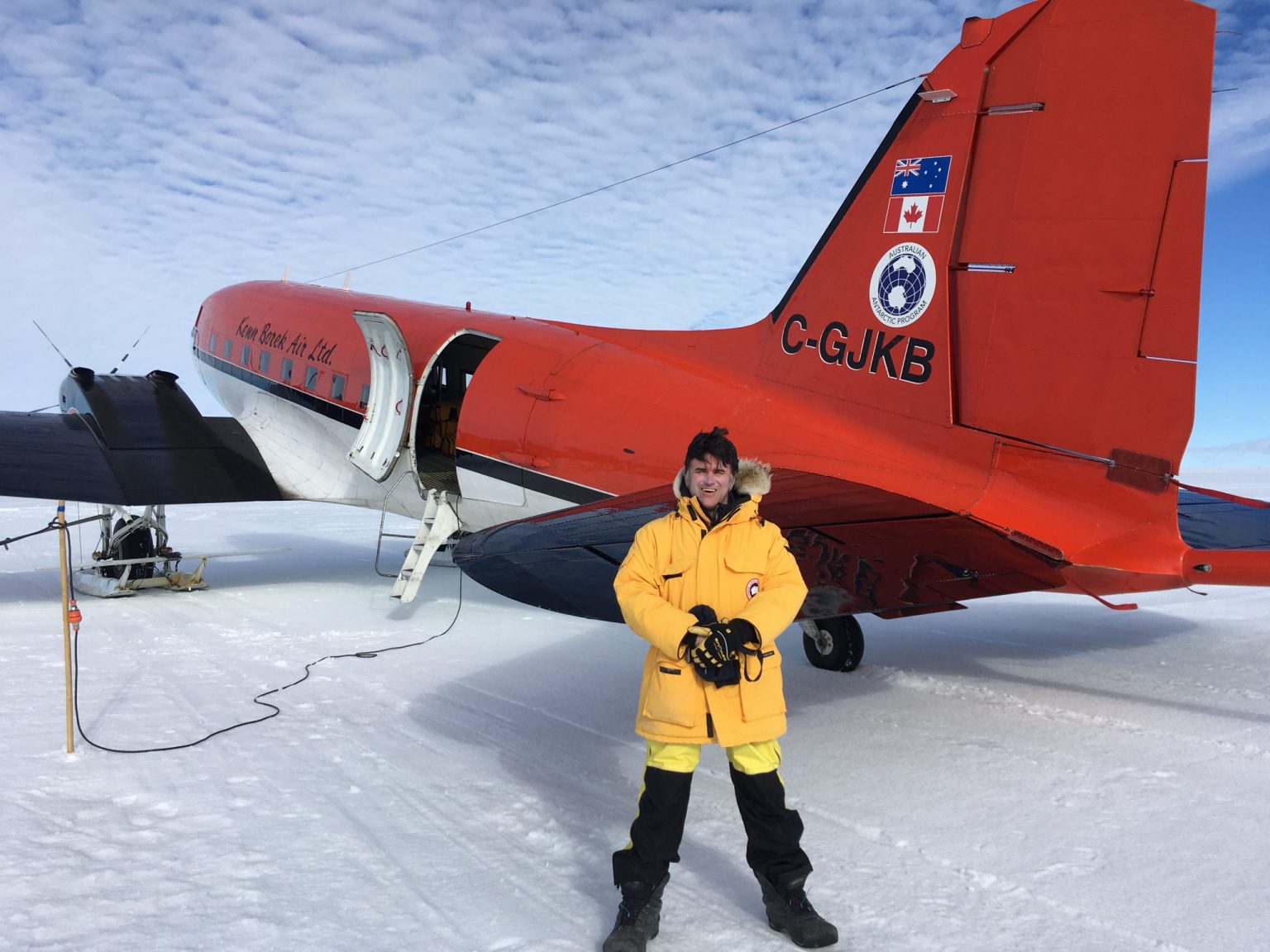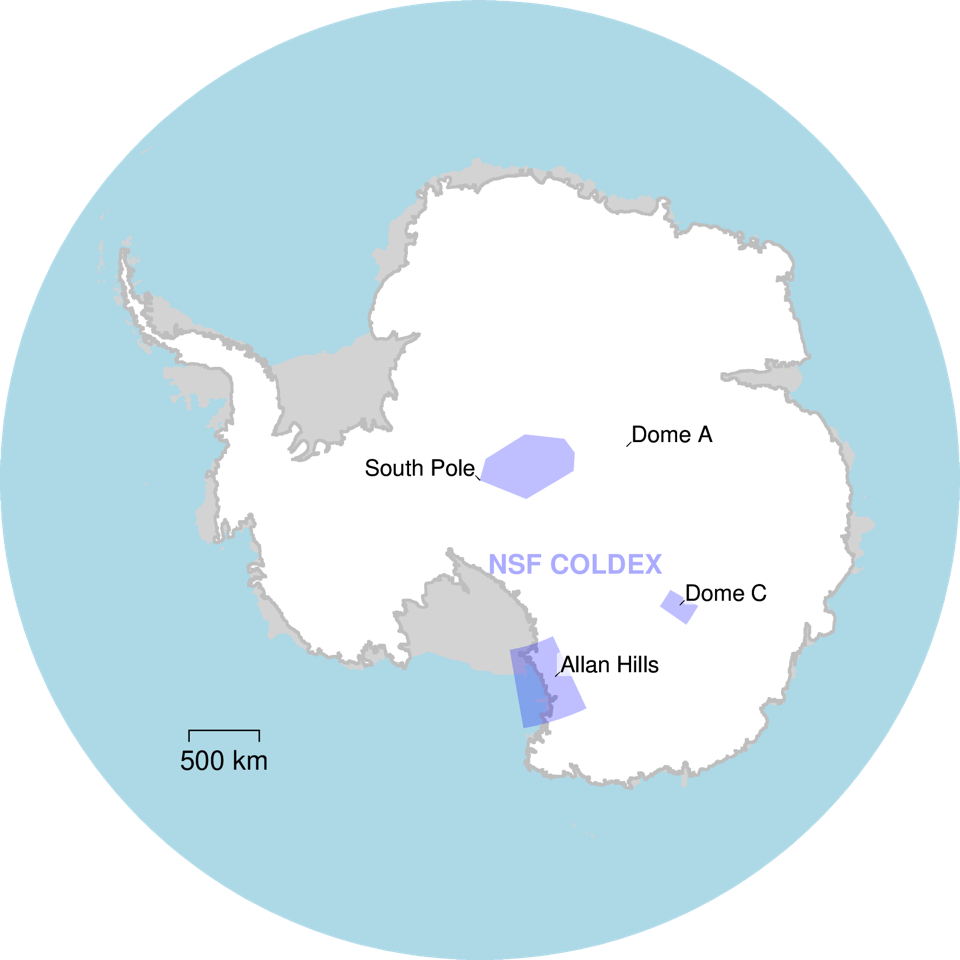
For decades, researchers seeking to understand global climate change have analyzed ice cores drilled deep within the Antarctic ice sheet. This ice traps chemicals and bubbles of ancient air that tell the story of how Earth’s climate has changed over time.
To develop a precise climate record, researchers seek to find continuous ice that’s uninterrupted, frozen in chronological order with newest ice at the top and the oldest ice at the bottom.
Until recently, the oldest continuous ice core samples went back as far as 800,000 years, just when Earth’s climate started changing rapidly.
“It just ran out at the interesting point,” says Duncan Young, a research associate professor at University of

Texas at Austin’s Institute for Geophysics (UTIG), a research unit of the UT Jackson School of Geosciences.
The need for even older continuous ice spurred an NSF Science and Technology Center called the Center for Oldest Ice Exploration (NSF COLDEX): a multi-institution collaboration funded by the National Science Foundation, that is exploring Antarctica for the oldest possible polar ice samples.
In 2021, Young joined NSF COLDEX, which is headquartered at Oregon State University. During a two-year period, Young and a UT team of researchers used airborne radar to map out an unexplored region in the deep interior of East Antarctica, near the South Pole. Although they haven’t found older continuous ice yet, their survey revealed new insights about the geologic processes happening under the Antarctic ice sheet and how ice is moving around beneath it.

The initial study findings were recently published in Geophysical Research Letters.
The researchers observed the deepest layer of ice, called the basal unit, within a large low area in the South Pole Basin. The researchers believe it ended up there after gradually moving down a subglacial mountain range picking up trace amounts of sediment and laying that sediment down in the basin.
“We were not expecting this,” Young said. “We think that as the ice melted, the basal unit carried small amounts of material from the mountain range and left sediment behind. This may be a novel kind of subglacial sedimentary basin that is forming without the usual processes that shape terrestrial landscape, like rivers or conventional ice sheet flow. It’s a gradual process over 14 to 30 million years, during which these little bits of sediment add up.”
This sediment-rich ground where the basal unit is melting is linked to localized areas of increased geothermal heat flow and melting at the base of the ice sheet, which influences how the ice flows above and how lakes form under the ice.

“Understanding how the heat flow varies at the base of the ice sheet and what the temperature is there is critical for finding places where the oldest continuous ice might be preserved.” Young said.
Although the South Pole basin itself may end up not being the best place for old continuous ice due to melting, Young said that the basal unit upstream of the South Pole Basin might actually protect old ice from the melting that is occurring at the bed. More recent work of NSF COLDEX has targeted those areas.
NSF COLDEX and Young’s team have also proposed to search for old continuous ice in other regions of Antarctica. They plan to lead an airborne mission to map the Allan Hills region, where NSF COLDEX has found discontinuous ice older than five million years, and connect that back to Little Dome C, a location where European scientists are also drilling ice cores to break the 800,000 year record.
This work was supported by NSF COLDEX and the G. Unger Vetlesen Foundation.
